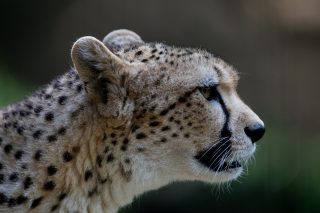Fun facts
Cheetahs, including Northeast African cheetahs, are the fastest land animals on the planet. They can reach over 100 km/hr in a full sprint. However, they can only keep this up for around 300 metres.
Cheetahs have several features on their bodies that help them run incredibly fast. For example, their long tails help them to stay balanced and change direction spontaneously during a chase. Their long, slender bodies help them be faster. They also have semi-retractable claws that give them extra grip on the ground.
Female cheetahs will leave their cubs in dens for a few weeks after birth to protect them from predators (as they are too small to keep up with their mothers).


